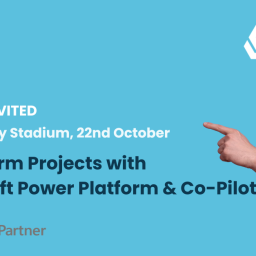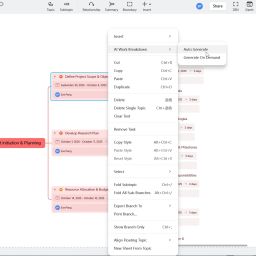
Sara Boltman, Butterfly Data on how to iterate and adapt
Government major projects get a lot of attention when it comes to election year – what’s going to be continued and what will be culled? For multi-year programmes large enough to warrant auditing by external experts there are published reports of their progress, from green to amber (occasionally red) and back again.
At Butterfly Data we have worked directly on a couple of these programmes and played a part in providing data quality improvement services or migrating platforms for a number of departments as they have embarked upon digital transformation of their core services.
Whether it’s the Office of the Public Guardian, digitising some of their paper processes, or a police force migrating a database that needs to be interoperable with Home Office systems, moving data around always requires the involvement of diverse stakeholders. These tasks are often pre-requisites for a much larger programme of work, which in latter days would have been coordinated by a programme manager clutching a Gantt chart as long as an ancient scroll.
Meeting in person to scribble amendments which would then be taken away to update the plan for the next few months, it was possible (but still difficult) to see the effects of slippage on various milestones. But in online meetings you couldn’t zoom in close enough to see the plan and still read the tasks.
The rise of agile
Those days are gone – replaced by a small army of scrum masters with sprints and stand-ups, user stories and burndown charts. Like a breath of fresh air in a stuffy committee room, agile swept through the corridors of power, leaving a trail of post-it notes and Jira tickets in its wake.
Agile methodologies have gained real traction, with some programmes choosing to switch midway through. In the realm of government projects, transitioning from traditional waterfall management to agile methodologies can be a daunting prospect. However, as many have discovered, it’s often a necessary step to ensure timely delivery and adaptability in the face of changing requirements.
For civil servants tasked with navigating this transition, there are a few top tips to consider:
Start small, scale gradually
Agile adoption doesn’t have to be an all-or-nothing proposition. Begin by introducing agile practices in a pilot project or team, allowing participants to familiarise themselves with the principles and rituals. As confidence grows, gradually expand agile practices to other teams and projects.
Focus on training and support
Providing comprehensive training and ongoing support is essential for fostering a culture of Agile within government departments. Invest in training sessions, workshops, and coaching to equip civil servants with the skills and knowledge needed to succeed in an Agile environment.
Encourage collaboration and communication
Agile thrives on collaboration and open communication. Encourage cross-functional teams to work closely together, breaking down silos and fostering a culture of transparency. Regular stand-up meetings, retrospectives, and other Agile ceremonies can help facilitate communication and alignment.
Embrace iteration and feedback
One of the key principles of agile is the ability to iterate and adapt based on feedback. Encourage civil servants to embrace a mindset of continuous improvement, welcoming feedback from users and stakeholders throughout the project lifecycle. This iterative approach can lead to more effective solutions and greater stakeholder satisfaction.
Celebrate successes and learn from failures
Recognise and celebrate the successes achieved through agile adoption, whether it’s delivering value to citizens more efficiently or overcoming obstacles as a team. Similarly, view setbacks and failures as learning opportunities, using retrospectives to identify areas for improvement and adjust course as needed.
By embracing agile principles and practices, civil servants can unlock new levels of efficiency, collaboration, and innovation in their work, ultimately leading to better outcomes for the citizens they serve. While senior stakeholders do still want to understand when milestones will be delivered and how an open-ended ‘backlog’ list of things to do can ever really be finished, there is no advantage to the hybrid ‘agilefall’ approach. You can’t balance on a beam if your feet are still wet!
Sara Boltman is CEO of Butterfly Data, the specialist provider of data science and management services to large government organisations with legacy data estates to maintain and upgrade.














